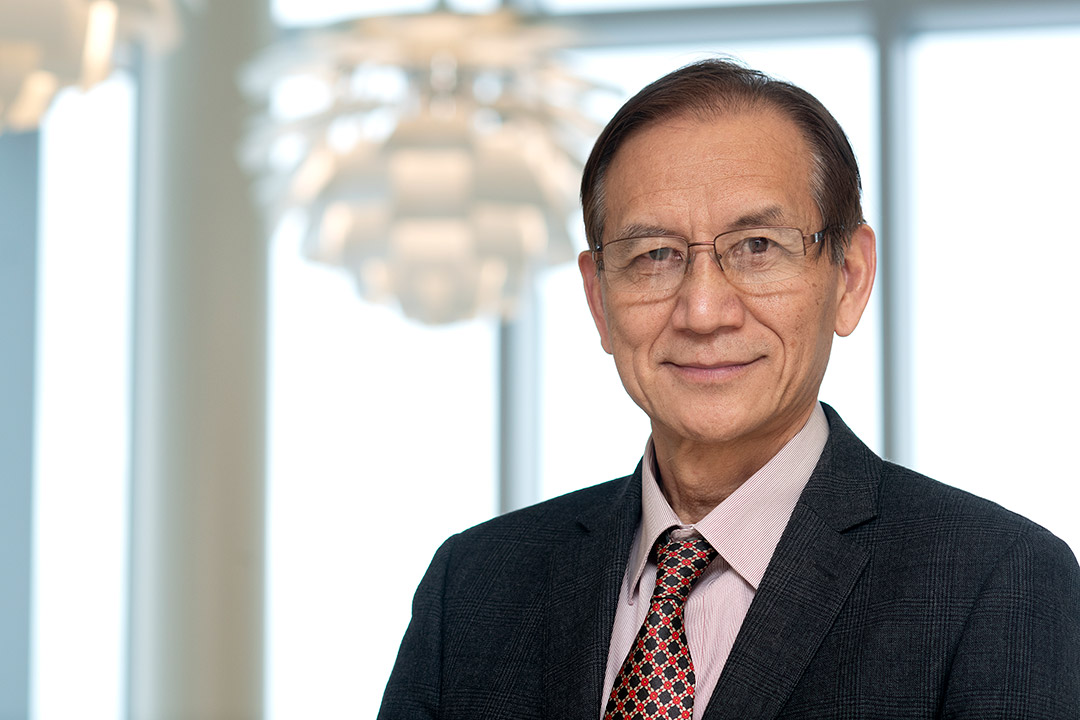Meet College of Health Sciences and Technology Dean Yong ‘Tai’ Wang
A. Sue Weisler
Dean Yong “Tai” Wang looks to grow the College of Health Sciences and Technology in all directions.
RIT’s College of Health Sciences and Technology began the year under new leadership with Dean Yong “Tai” Wang.
Wang joined RIT in January from the University of Texas at Tyler, where he was dean and endowed chair professor of the Drs. Lee Roy and Lucy Mathis College of Nursing and Health Sciences. His research focuses on rehabilitative biomechanics related to wheelchair locomotion and Tai Chi exercise.
Now at RIT, Wang looks forward to connecting the health sciences and technology to create new health care solutions, and new degree programs. Here, Wang shares his ideas.
What excites you about RIT?
The reputation of RIT and the uniqueness of the college. There are not many colleges like this in the United States that combine health sciences and technology. I think the college has great potential to grow.
The College of Health Sciences and Technology grew from the RIT and Rochester Regional Health Alliance. What opportunities do you see through this strategic partnership?
RIT is interested in developing a Doctor of Physical Therapy program, and Rochester Regional Health would like to provide the clinical site. It is one of the hot programs in health professions. The American Association of Physical Therapy required every Master of Physical Therapy program to convert to Doctor of Physical Therapy by 2020.
I was a professor of physical therapy for 16 years. I have experience through the whole process of converting the program from BS to Master of Physical Therapy, then to Doctor of Physical Therapy. I hope to develop a similar program at RIT in the future. The Doctor of Physical Therapy will be my first project.
I understand you are a Tai Chi master. How does Tai Chi inform your research?
Tai Chi is my passion. It is a mind-body exercise and a combination of breathing and graceful movement. In Tai Chi both hands are moving in opposite directions. It’s called the yin and yang balance.
Tai Chi is one area of my research in the past 20 years. I taught Tai Chi as a therapeutic exercise for Doctor of Physical Therapy Students at Georgia State University. I measured students physical and mental health at the beginning and end of the semester and published the paper in the American journal of Chinese Medicine. It is one of the most cited Tai Chi studies.
Then I started to develop wheelchair Tai Chi with funding from Paralyzed Veterans of America and from the National Institute of Disability and Rehabilitative Research. I think I am one of the leading persons doing wheelchair Tai Chi in the United States. Then I started to look at Tai Chi for cognitive issues, such as cognitive impairment or Alzheimer’s disease. We are also interested in exploring the effects of Tai Chi on people with Parkinson’s disease.
Your research dovetails with RIT’s signature research program in personalized health care technology. Tell us about the Tai Chi Ball you patented.
I developed the Tai Chi Ball while at University of Texas at Tyler. It was the first patent for UT Tyler. It combines mind body exercise with weight training. Research from American College of Sports Medicine shows that strength training is crucial for older people. Even people 80 years old should do strength training. Tai Chi movement is slow and graceful and the Tai Chi Ball targets muscle groups they use in daily living.
The Tai Chi Ball is 3D printed. It is filled with bee-bees, and the weight is adjustable. Sometimes you put it together as one piece and handle it as one piece, sometimes we separate it in two like a yin and yang part.
My next focus is combining Tai Chi or wheelchair Tai Chi with the Tai Chi Ball for soldiers and veterans to prevent and treat neuromuscular disorders.
What would you like students and alumni to know about you?
I am a dean and also a professor. When I was dean at the University of Texas at Tyler, I met with students several times a semester to hear what they needed to be supported.
The ultimate goal is student success. We talk about student success in terms of recruitment, retention, and graduation. I think we should add another one, as we did at UT Tyler, called “job placement.” We had a person in the college called a “career success coach” to help students prepare their resumes, prepare for interviews, and find jobs. I would like to do some similar things to help students.
What are you looking forward to in the spring semester?
I am learning from faculty and program directors. I am looking to increase enrollment with existing resources and to identify possible new programs we could develop. Doctor of Physical Therapy is a good example. It has community support.








